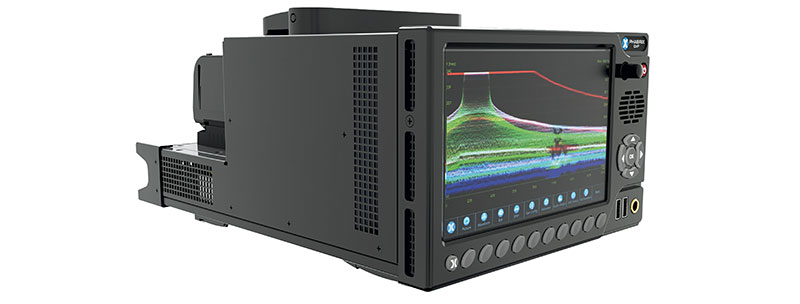PHABRIX will launch a new portable Qx Series instrument at IBC 2022, the QxP, with the same flexible architecture and workflow support of the existing QxL rasterizer, plus a 3RU LCD screen.

PHABRIX is launching a new portable Qx Series instrument, the QxP, that has the same flexible architecture and workflow support of their existing QxL rasterizer. The QxP incorporates a 3RU multi-touch 1920 x 1200 7-inch LCD screen and is equally effective on-set in SDR/HDR, grading and shading applications, as well as in QC, MCR, engineering and R&D environments.
The QxP’s main features include its capacity for 25GbE UHD IP workflows, and its suitability for portable operation due to an optional V-mount battery plate. Incorporating touchscreen control and external HDMI for a rasterizer output with up to 16 instruments, the QxP has been designed to deliver the capabilities needed for flexibility and ease of configuration when working with existing and emerging production infrastructures. This design makes QxP suitable for workflows involving HD, UHD, SDR, HDR, SDI and IP, as well as conventional and remote productions.
In preparation for upcoming workflows, the QxP also has IP support including SMPTE ST 2110 and 2022-6, along with compatibility with a wide range of 444 and 422, YUV and RGB video formats. For real-time IP production, the unit supports generation and analysis of HD/3G/UHD/EUHD 2110 payloads on generic SFP28/25GbE interfaces. SDI users are also supplied with an SDI option for hybrid SDI/IP applications and a complete set of SDI tools with audio, Dolby-detect and DATA view included as standard.
Delivering waveforms in a very compact form, the QxP is expected to suit new and existing Qx Series users working on-set or in studio, post-production and research environments.
The QxP will be shown first at IBC 2022, 9-12 September in Amsterdam at the RAI. Phillip Adams, founder and CEO of PHABRIX, said, “Because so many broadcasters and developers now need to carry on working across different environments in SDI, as well as implementing new IP workflows, and at the same time manage the complexity of 4K and HDR on top of existing HD production, the need for a versatile, portable and compact rasterizer is evident.” www.phabrix.com




